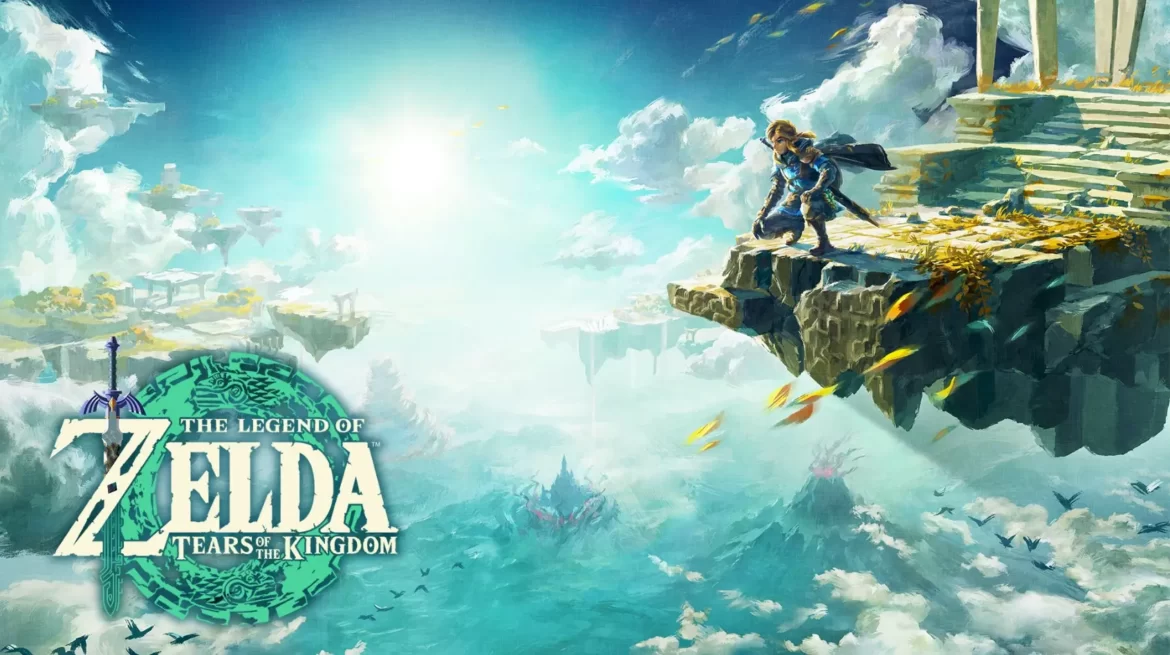Release Date : May 12, 2023
Developer(s) : Nintendo EPD
Publisher(s) : Nintendo
Platforms : Nintendo Switch
In 2017, The Legend Of Zelda: Breath of the Wild reshuffled the open-world deck with an innovative approach that delivered a sense of adventure like never before. Total freedom with a world that’s entirely accessible from the outset, environment interactions that leave room for creativity, crazy construction that constantly stirs our curiosity… We could go on and on about its many qualities, but the question today is: how can we do better than this without giving the impression of a remake or version 1.5?
It took Nintendo six years to find the answer with The Legend of Zelda: Tears of the Kingdom. Six years of brainstorming on how to surprise and delight players once again in the lands of Hyrule, which they know almost inside out. We know that with this new opus, the franchise is now reaching greater heights, but this new Zelda does much more than simply send us to the seventh sky. Is The Legend of Zelda: Tears of the Kingdom a new masterpiece?
Table of Contents
Always the King of the Open World?
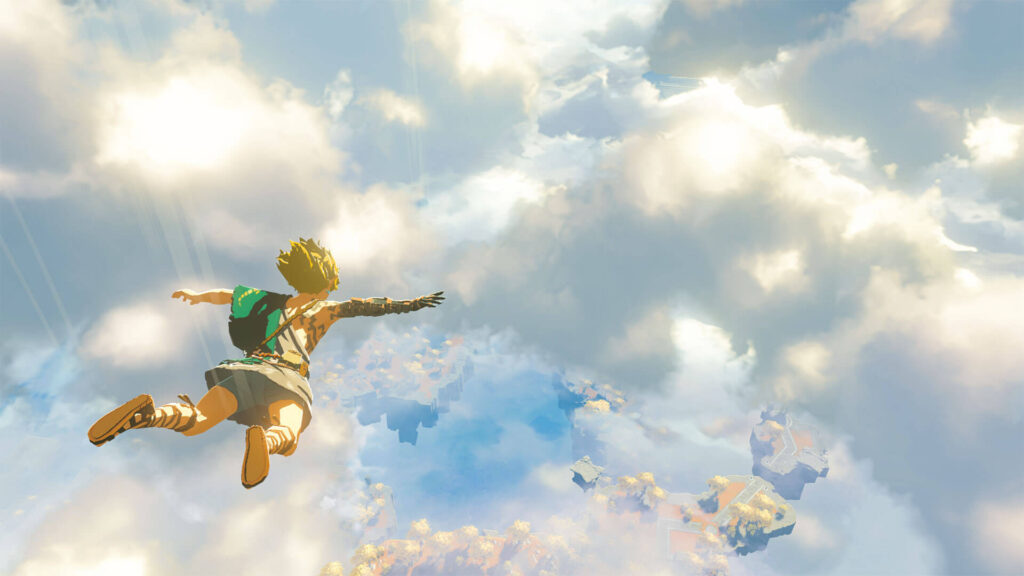
Breath of the Wild was literally the breath of nature, the call of adventure in an almost completely wild world. We won’t reveal what lies behind the title “Tears of the Kingdom” in order to avoid spoiling the plot, but let’s simply take the context of this sequel as an example. After a few events that we won’t mention, Link wakes up in an unfamiliar place with a strange right arm. Then, after being introduced to the new powers provided by this new limb, our Hylian hero becomes aware of his mission. It’s a pretty simple goal, but one that conceals plenty of mysteries: finding the missing Princess Zelda.
When he returns to the kingdom of Hyrule, he finds that the world he once knew has changed. Ruins have fallen from the sky and devastated the kingdom, which is now in the process of being rebuilt. A theme that plays an important role here, as one of Link’s new skills allows him to assemble objects to create different things. Thus, on the roads, we find numerous building materials that can be used at will. This perfectly illustrates the coherence and close link between lore and gameplay, as is equally true of the hero’s other talents. In addition to this, the open world gains significantly in terms of verticality, with its numerous floating islands located at different altitude levels, but Hyrule also gains in terms of depth.
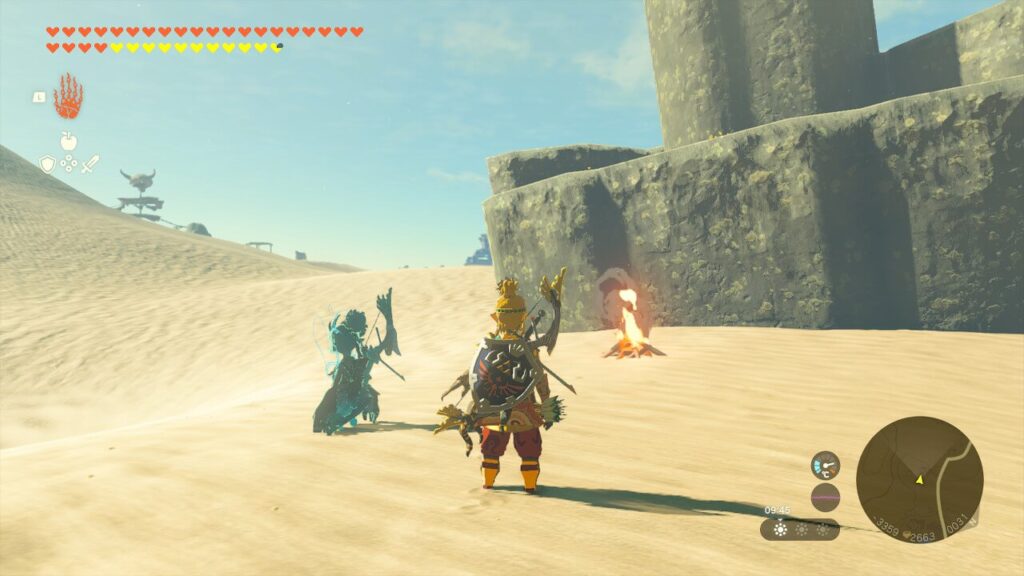
Observing the game from afar, it’s easy to think that Nintendo already had a solid base with Breath of the Wild, and that the developers had simply refined something that was already working. However, after several hours, it becomes clear that the exploration is more coherent than ever, and that in fact, the construction of this huge game zone undoubtedly required a gigantic redesign to ensure that all the new mechanics fit perfectly with the environment. Yes, this The Legend of Zelda: Tears of the Kingdom is neither a hidden DLC nor a 1.5 version of the previous installment.
Link’s new powers have never been more relevant, and everything is done to make exploration as fluid as possible. Lands are now scattered with hidden caves and deep underground tunnels. From now on, the vast majority of ores can be found in this type of place, unlike in the first game where they were found on the surface of mountains. In addition, Link’s “Infiltration” ability now allows him to traverse surfaces above him, and one of its key uses is to emerge directly from the depths you’ve just explored, avoiding the need to go back and forth, or to break the rhythm with teleportation. This doesn’t make climbing any less useful, of course, and it can’t be abused either, thanks to the limits imposed. This is just a brief example of the intelligent construction and coherence mentioned above.
The Legacy of Breath of the Wild
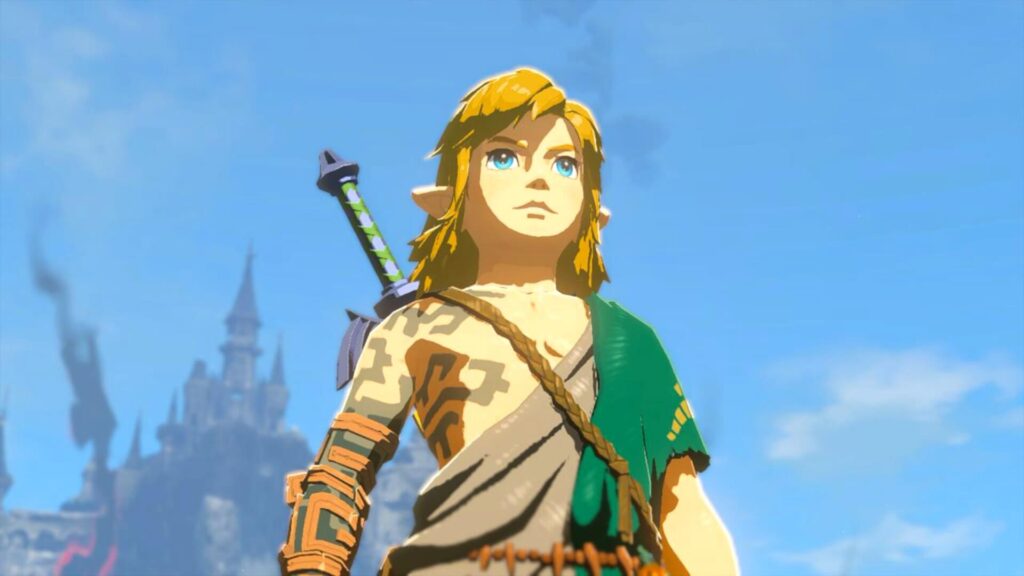
However, the legacy of Breath of the Wild remains intact, giving this sequel a very special flavor. Revisiting familiar places like the Great Plateau, revisiting NPCs, and finding out what happened to them are all part of the pleasure of “rediscovery”. It retains the same qualities as well as the same flaws, in case you didn’t like Breath of the Wild. There is never a feeling of emptiness, since there is always something to do or see, whether it’s the discovery of a treasure, a shrine, or a Korok cork puzzle. For better or worse, these familiar elements return in Tears of the Kingdom. In this regard, there is undoubtedly a certain amount of repetition that will leave players feeling indifferent, given that the element of surprise has faded.
As for the sanctuaries, we can still welcome an effort to vary the approaches. In fact, they make greater use than ever of their playful and didactic aspects, giving you a better grasp of everything to do with construction. The goal remains the same since these sanctuaries allow you to earn glows that increase your maximum number of hearts as well as your maximum stamina. Storytelling is basically the same, although the story is a little more emotional, with Zelda taking the spotlight. On the other hand, this hasn’t stopped Nintendo from listening to complaints about the lack of strong dungeons. They’ve kept the same number of dungeons, but they’re a lot more interesting.

The new guardians you’ve already seen in the trailers are more endearing than ever, especially Tulin and Sidon. This sequel continues the development and evolution of these strong characters ( particularly Sidon and Riju), but the new characters introduced are certainly worth mentioning. However, it’s a pity that Nintendo remains quite stingy with information, only scratching the surface to maintain this “Manichean” model.
So let’s get down to business and discuss the controversial subject right away. The Legend of Zelda: Tears of the Kingdom retains the controversial system of destructible weapons, but Nintendo has found the perfect solution with Amalgam, another of Link’s powers that lets you fuse a weapon or shield with practically anything. Although not being a fan of these fleeting pieces of equipment in Breath of the Wild, I sincerely believe that Amalgam will put everyone on the same page. It’s a real stroke of intelligence to address this rather controversial point with such cleverness and turn it into one of the game’s key systems. Although we’re limited to one fusion per weapon, this allows us to perform some pretty crazy combinations (in addition to boosting durability) that get our imaginations going even if they’re not necessarily useful on their own, such as attaching a bomb to a shield and then sliding with it to perform a super jump. And it works with arrows too!
The Switch Can Do All That?
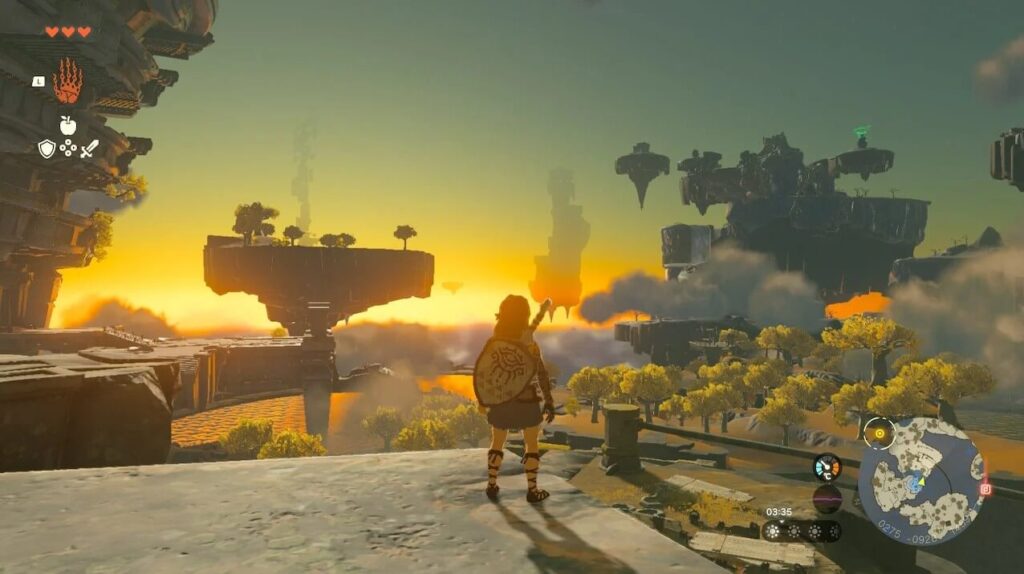
While we’re on the subject of similarities with Breath of the Wild and the issues that have divided fans, let’s talk about the game’s music. As a reminder, Breath of the Wild took the bold step of using softer, more subdued music to reinforce the visual aspect of the adventure and leave more room for immersive sound design. While the Zelda franchise is famous for its heroic and epic theme songs, many welcomed this 180-degree turn, while others spoke of “random piano notes”.
Fortunately, this model has been retained, as the open-world approach remains unchanged. However, it’s hard to hear any real difference between the two games, as the soundtrack is often too subtle, apart from a few specific moods. The Legend of Zelda: Tears of the Kingdom also features a large number of songs from the first game, such as the village themes, but it still manages to hit the right musical note for boss battles and important plot moments.
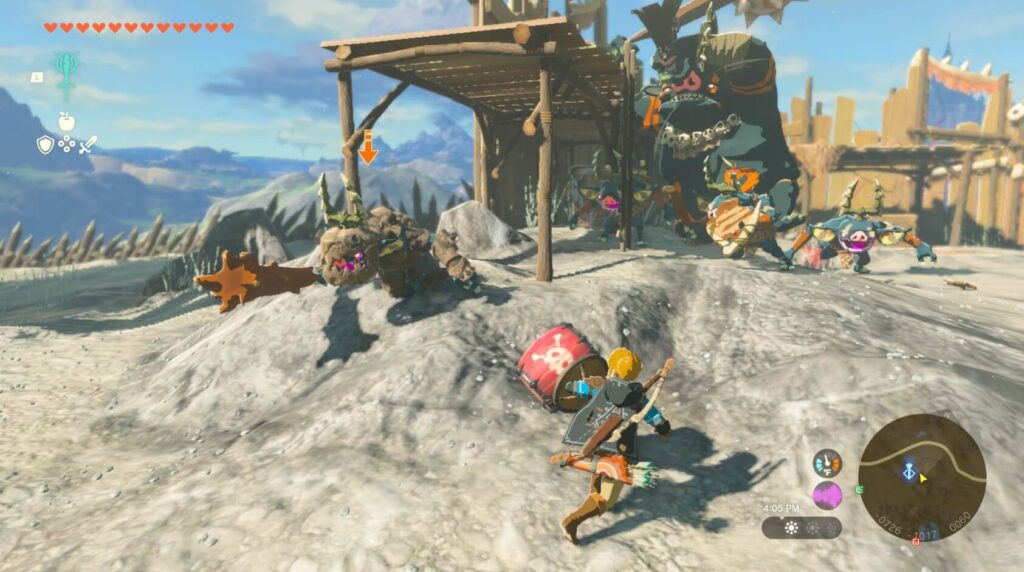
Concerns about the technical side of The Legend of Zelda: Tears of the Kingdom are legitimate, with a Switch that shows its limits with each new, slightly ambitious game. Although Breath of the Wild was originally intended for the Wii U, Nintendo is once again pushing the limits with this sequel. Despite the previously mentioned increases in verticality and depth, the game remains very solid, and for the most part retains 30 frames per second. On the other hand, there are a few FPS drops when using The power of the Hold and when there are a lot of elements on the screen.
Graphics are similar to the previous title, but we’re still wondering how such a huge, detailed open world can run smoothly on the hybrid console. It’s really impressive, especially since the game can even handle large-scale battles without blinking an eye. It really does take a lot to bring it to its knees. Unfortunately, this comes with a rather low resolution. Based on our comparisons with Breath of the Wild and our observations with the naked eye, we can say that we’re keeping a similar resolution, with around 900p in docked mode and 720p in portable mode.
A Tribute to Creativity Destined to Last
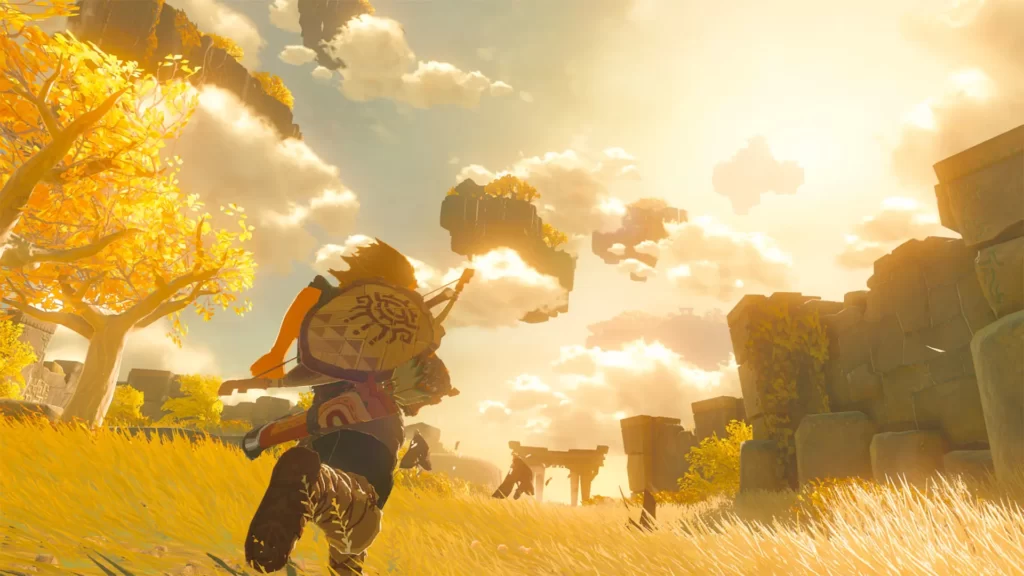
It’s clear that Nintendo has listened carefully to the major criticisms expressed by Breath of the Wild players. Ergonomic improvements include a clearer menu ( finally, you can switch inventory categories with ZL/ZR instead of the joystick), as well as several ways of reorganizing ingredients by taking the ones you use the most, or the ones that give more attack for Amalgam. You can also launch ingredients directly or drop them quickly using the up arrow key. Dropping a bundle of wood and a flint has never been so quick and easy. The last thing that used to be frustrating is now corrected: the recipes. The recipes you have unlocked can now be consulted for each ingredient and easily reproduced.
On the other hand, a few “new features” (by which we mean things that you unlock during the storyline, and which therefore, for us, fall into the realm of major gameplay spoilers) are rather annoying, even though they can be deactivated. When you play the game, you’ll understand what we’re referring to.
Nintendo is also well aware of the creative dimension of Breath of the Wild, which has ensured its durability over time, even though it is a single-player game. To this day, we can still see videos of players going wild with the game’s mechanics on social networks, not to mention the speedrunners and glitches that can sometimes be quite impressive. This is probably how the sandbox dimension of The Legend of Zelda: Tears of the Kingdom was created. Overall, Nintendo has taken this idea and developed it further, making it accessible to everyone.
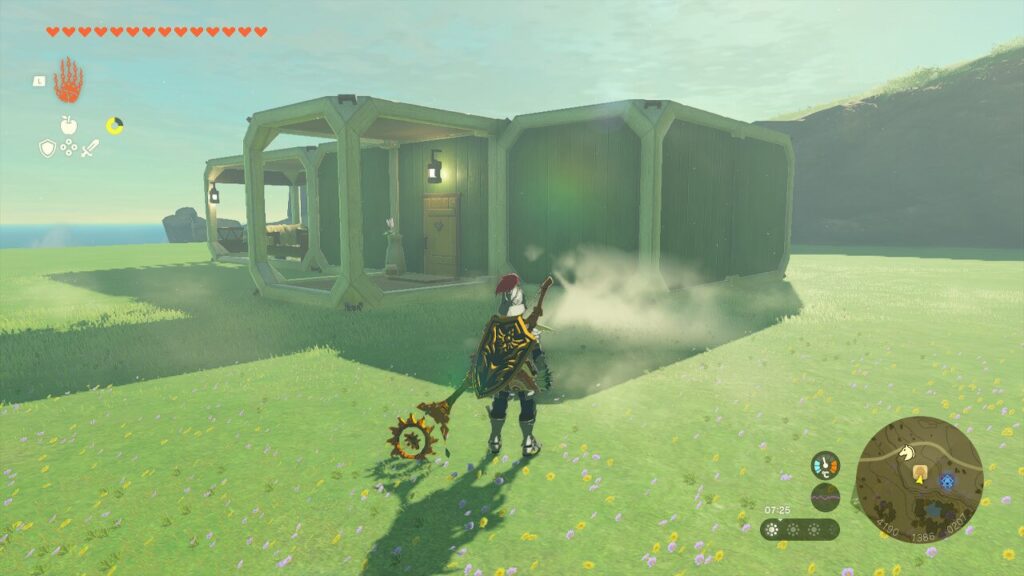
This construction principle is destined to keep the game alive for the next few years. We’ve never been so excited about the potential DLC that will be added. The mechanics are impressive and demonstrate an outstanding grasp of physics once again. It takes a while to get used to, but the manipulations are simple and logical. Gluing elements, removing them, rotating them, moving them… all this quickly becomes intuitive. You never get tired of trying new things for fun.
Moreover, this construction system doesn’t penalize you for lack of creativity. Even when you’re asked to build something in order to progress in a dungeon, making something extremely basic (4 wheels attached to a rectangular plate to make a vehicle, for example) will always be a viable solution. The rest is just a bonus. You can solve puzzles in various different ways, or overcome an obstacle in the craziest possible way with an absurd assembly. These are the top new features of this new Zelda. If you were worried about no longer being impressed, this is exactly what you need to be amazed again, on top of everything else.
Conclusion
The Legend of Zelda: Tears of the Kingdom continues to build on the qualities that forged its open-world legend, impressing us once again with its brilliant new features, creativity, and constant sense of wonder. You expected a great game from this sequel, and you’ve got it. Hyrule gains in depth and height, with breathtaking results and a feeling of immensity rarely experienced. If this is your first experience of the Zelda-style open world, you’ll be blown away, and for those who’ve already gone through Breath of the Wild from top to bottom, you’ll be somewhere between nostalgic and admiring such renewal, even if it must be said that some elements may feel a little redundant. Let’s face it, The Legend of Zelda: Tears of the Kingdom is the main candidate for the title of Game of the Year 2023.
